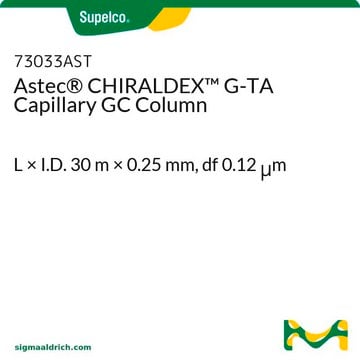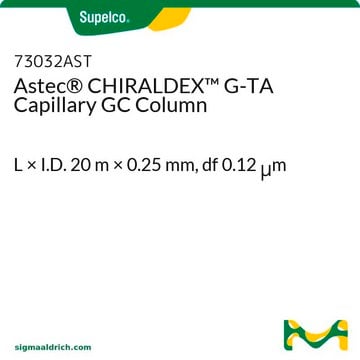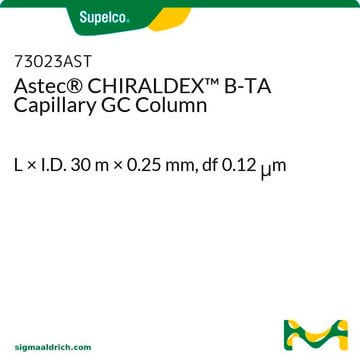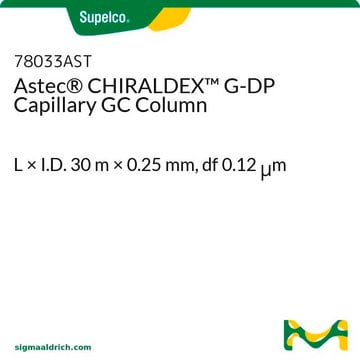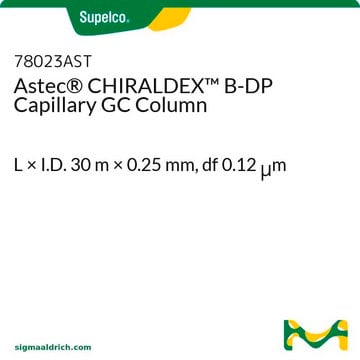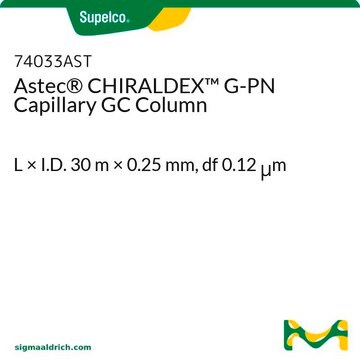73035AST
Astec® CHIRALDEX™ G-TA Capillary GC Column
L × I.D. 50 m × 0.25 mm, df 0.12 μm
Synonym(s):
GC column, chiral, gamma-dextran
About This Item
Recommended Products
material
fused silica
description
GC capillary column
packaging
pkg of 1 ea
parameter
-10-180 °C temperature (isothermal or programmed)
Beta value
500
df
0.12 μm
technique(s)
gas chromatography (GC): suitable
L × I.D.
50 m × 0.25 mm
matrix active group
non-bonded; 2,6-di-O-pentyl-3-trifluoroacetyl derivative of γ-cyclodextrin phase
application(s)
agriculture
chemicals and industrial polymers
cleaning products
clinical
cosmetics
environmental
flavors and fragrances
food and beverages
forensics and toxicology
life science and biopharma
personal care
pharmaceutical (small molecule)
column type
capillary chiral
separation technique
chiral
Looking for similar products? Visit Product Comparison Guide
Related Categories
General description
Application
- Enantioselective gas chromatographic analysis of aqueous samples by on-line derivatisation. Application to enzymatic reactions.: This study explores the use of the Astec CHIRALDEX G-TA Capillary GC Column for enantioselective gas chromatographic analysis. The method involves on-line derivatization, enabling the analysis of aqueous samples and applying this technique to enzymatic reactions. This innovative approach highlights the column′s capability in achieving high selectivity and sensitivity for chiral compounds in complex matrices (Mommers et al., 2008).
Chem/Phys Resistance
- -10 °C to 180 °C isothermal and programmed
Other Notes
Legal Information
Choose from one of the most recent versions:
Already Own This Product?
Find documentation for the products that you have recently purchased in the Document Library.
Articles
Chromatographic enantiomeric separation of amino acids, like proline, is described for chiral GC analysis after derivatization.
Chromatographic enantiomeric separation of amino acids, like proline, is described for chiral GC analysis after derivatization.
Chromatographic enantiomeric separation of amino acids, like proline, is described for chiral GC analysis after derivatization.
Chromatographic enantiomeric separation of amino acids, like proline, is described for chiral GC analysis after derivatization.
Our team of scientists has experience in all areas of research including Life Science, Material Science, Chemical Synthesis, Chromatography, Analytical and many others.
Contact Technical Service